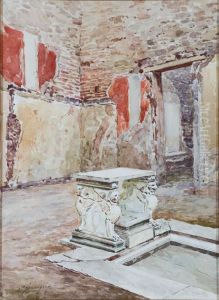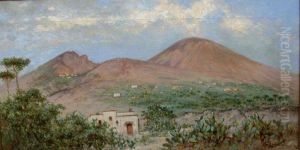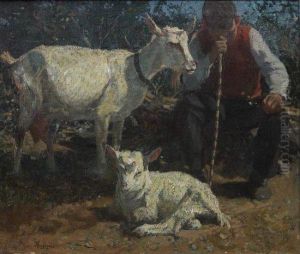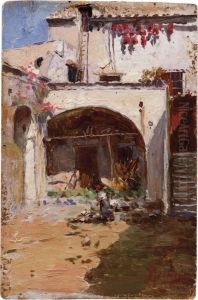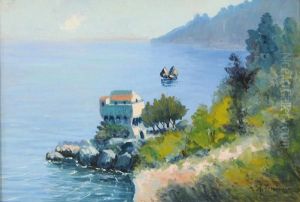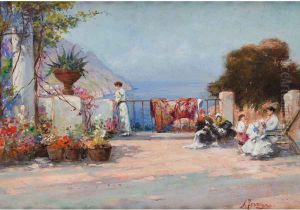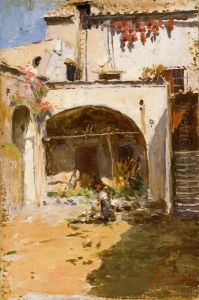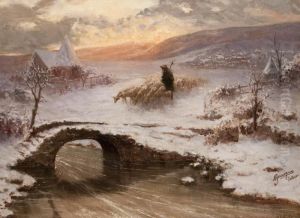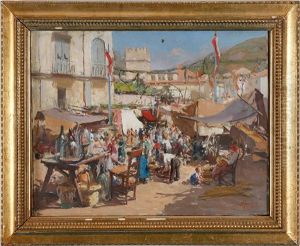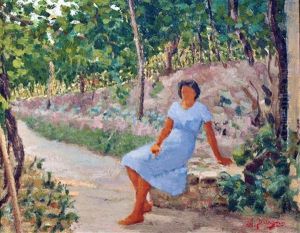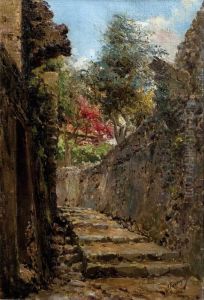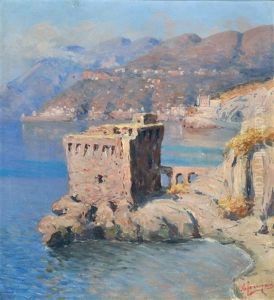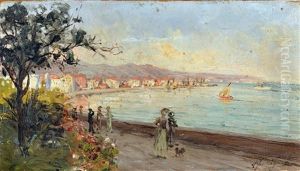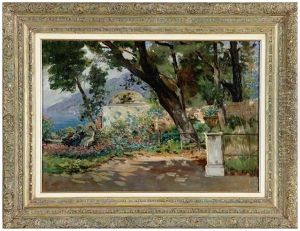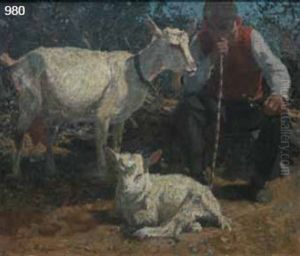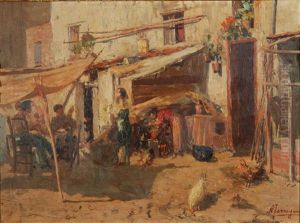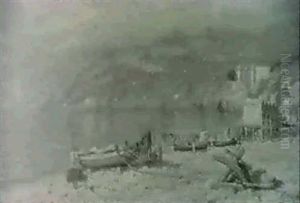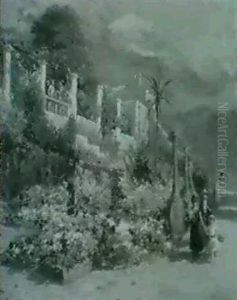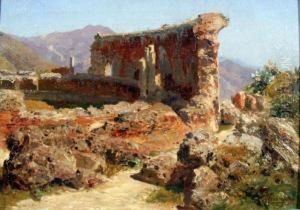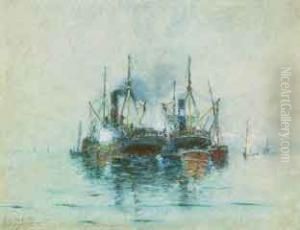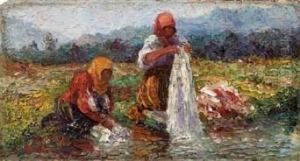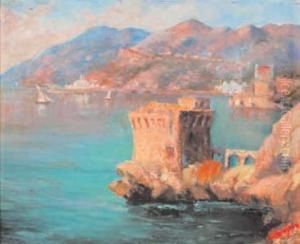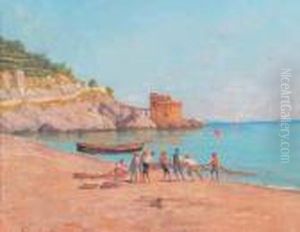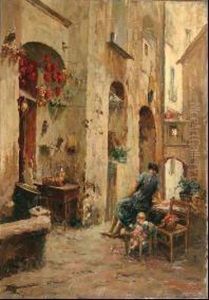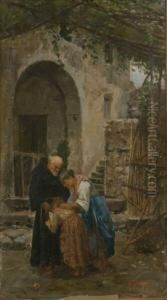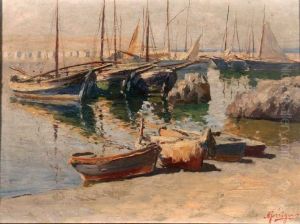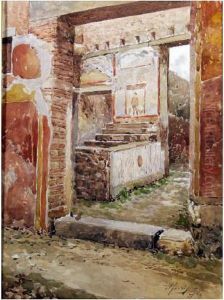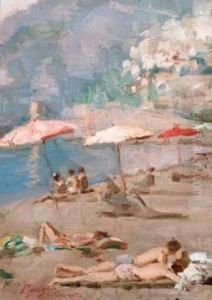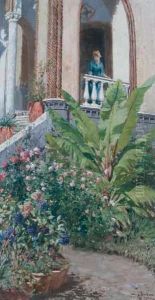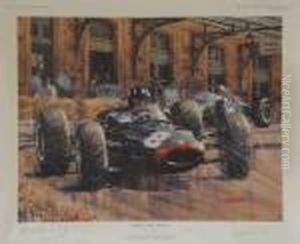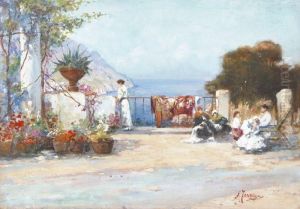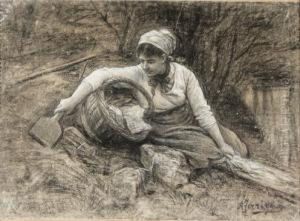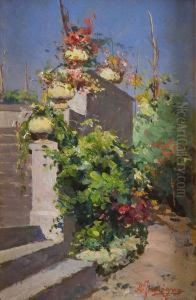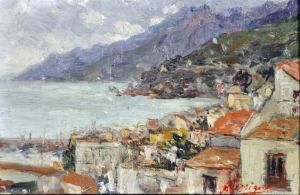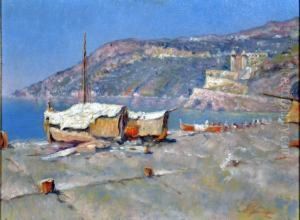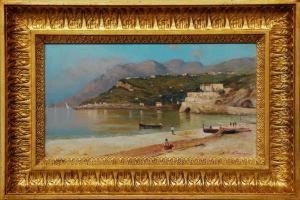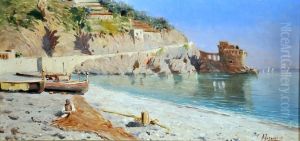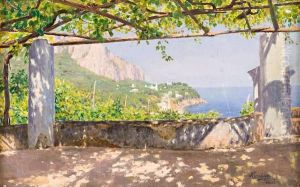Antonio Ferrigno Paintings
Antonio Ferrigno was an Italian painter known for his expertise in the genre of still life and for his landscape paintings. Born on December 13, 1863, in the town of Monte San Giacomo, Salerno, Italy, Ferrigno demonstrated an early talent for art which led him to pursue formal education in the field. He studied at the Academy of Fine Arts in Naples, where he was influenced by the rich artistic traditions of the region and the Neapolitan School of painting.
During his career, Ferrigno developed a style that was characterized by a meticulous attention to detail and a vibrant use of color, which became his signature in still life paintings. His compositions often featured fruits, flowers, and everyday objects, rendered with realism and a sense of tangible presence. Ferrigno's landscapes, on the other hand, captured the picturesque beauty of the Italian countryside and coastal scenes, reflecting his deep connection to his homeland.
Despite not being as widely recognized as some of his contemporaries, Ferrigno's work was appreciated in his time and continues to be valued by collectors and art enthusiasts. He exhibited his art in various shows and galleries, gaining respect among the artistic community. His paintings are characterized by their luminosity and the clarity of the atmosphere he was able to depict, which resonated with the aesthetic sensibilities of the late 19th and early 20th centuries.
Antonio Ferrigno's career spanned several decades, during which he witnessed significant changes in the art world. However, he remained true to his classical roots and did not delve into the avant-garde movements that were emerging around him. He continued to paint until his later years, leaving behind a body of work that is appreciated for its technical skill and evocative beauty.
Ferrigno passed away on April 15, 1940, in Naples, leaving a legacy as a master of still life and landscape painting in the Italian art scene. His work remains a testament to the enduring appeal of traditional painting techniques and the timeless beauty of Italy's natural and cultivated landscapes.

